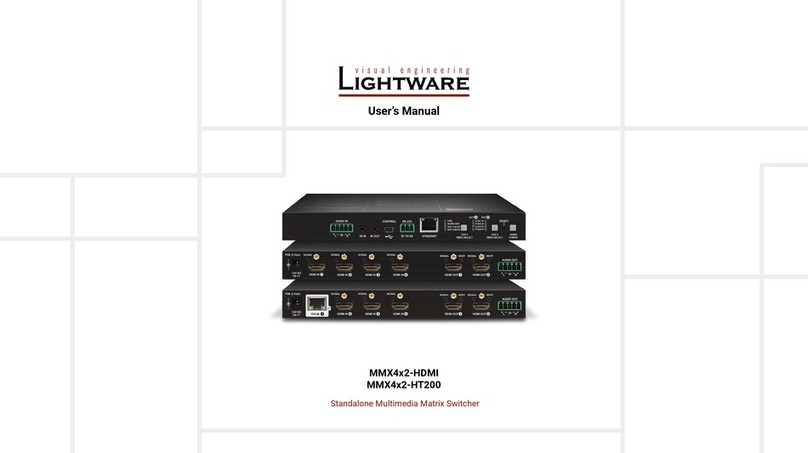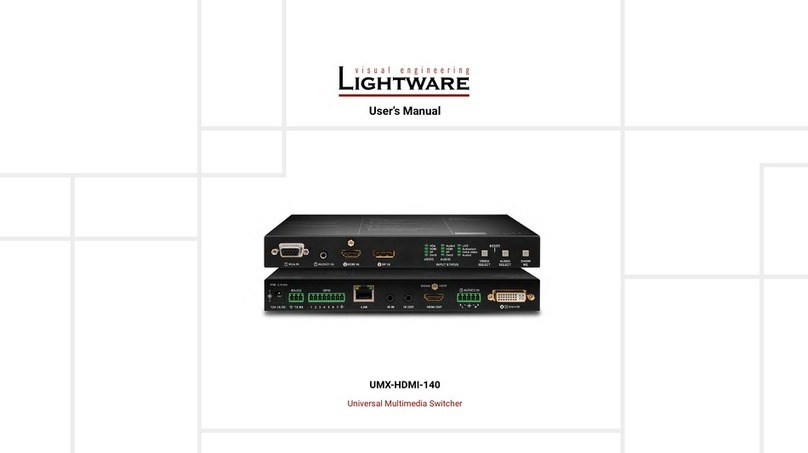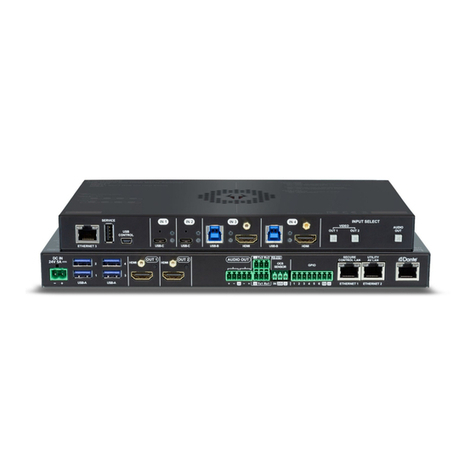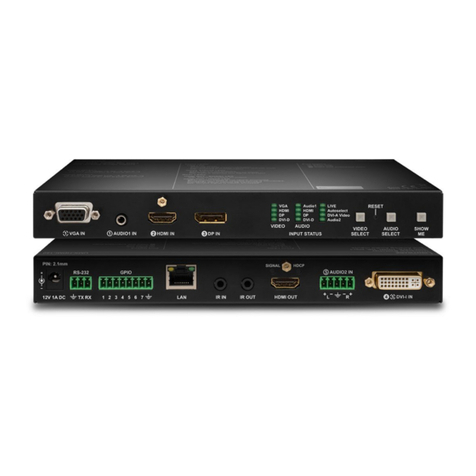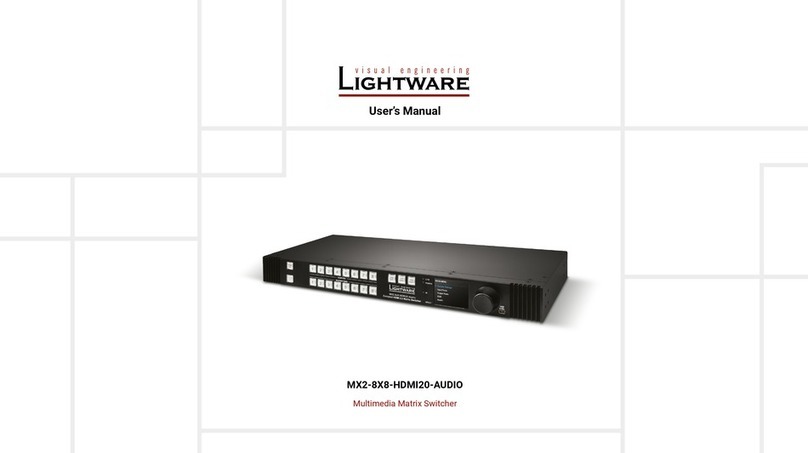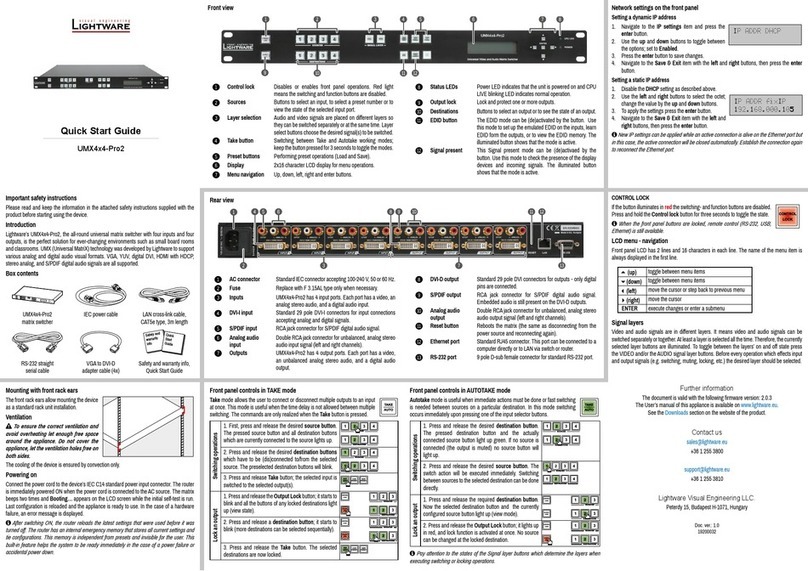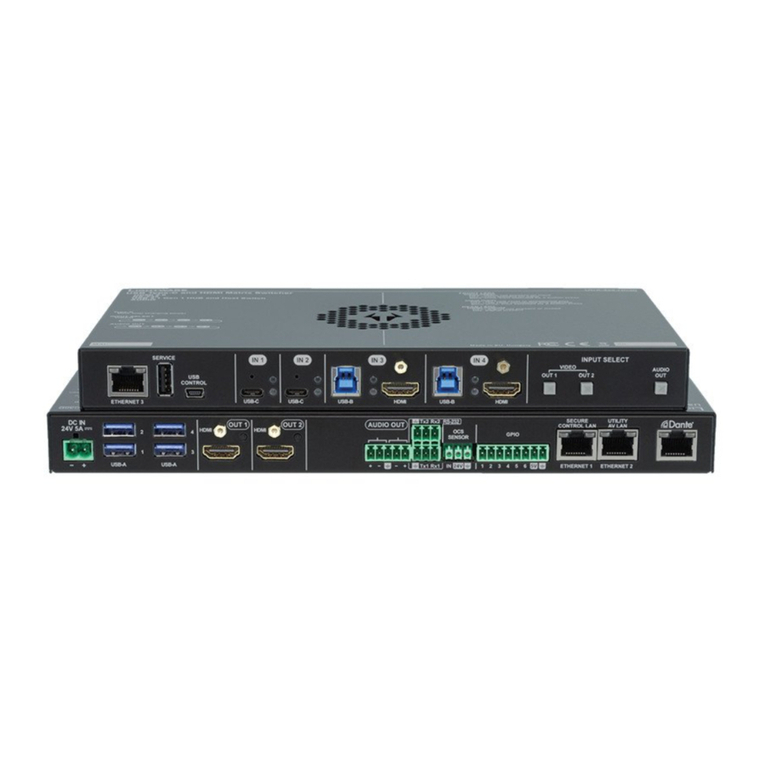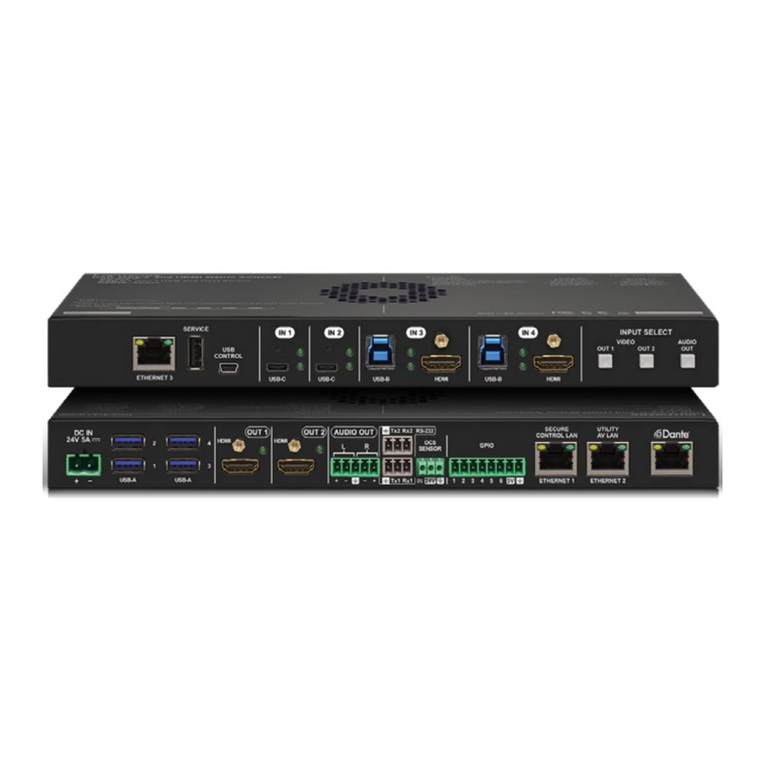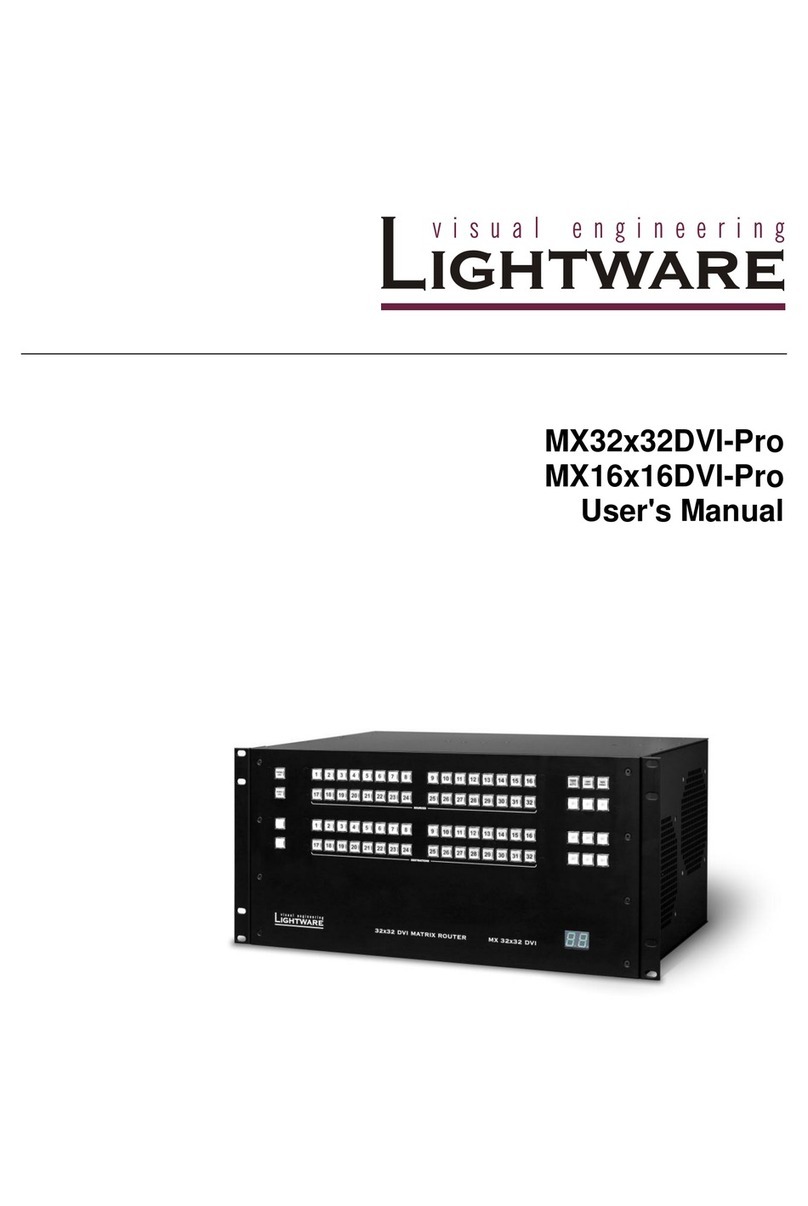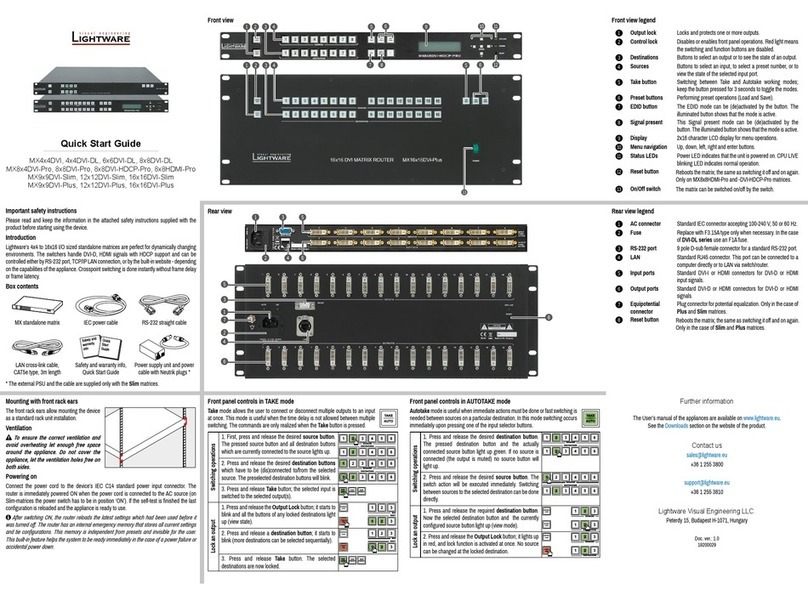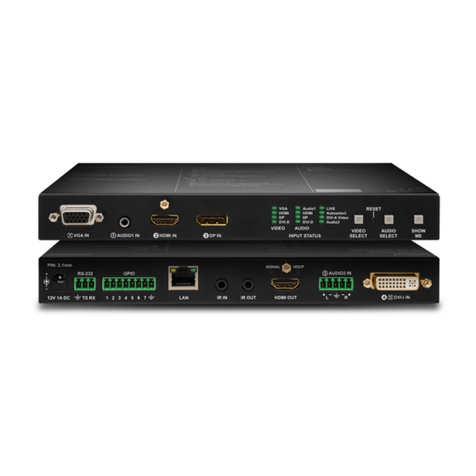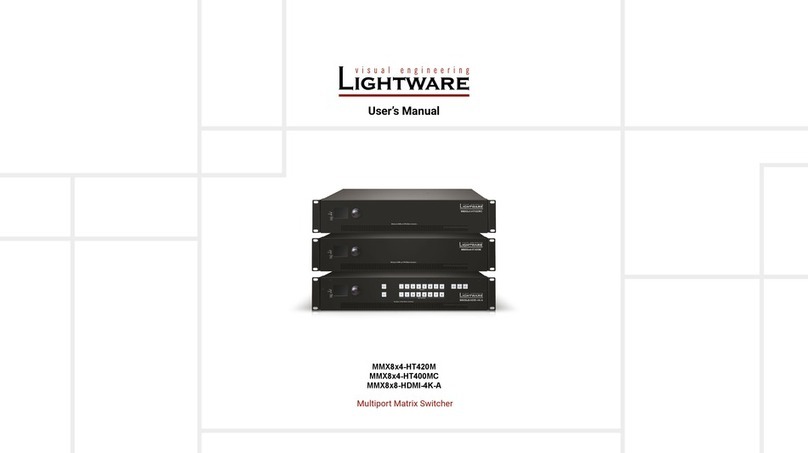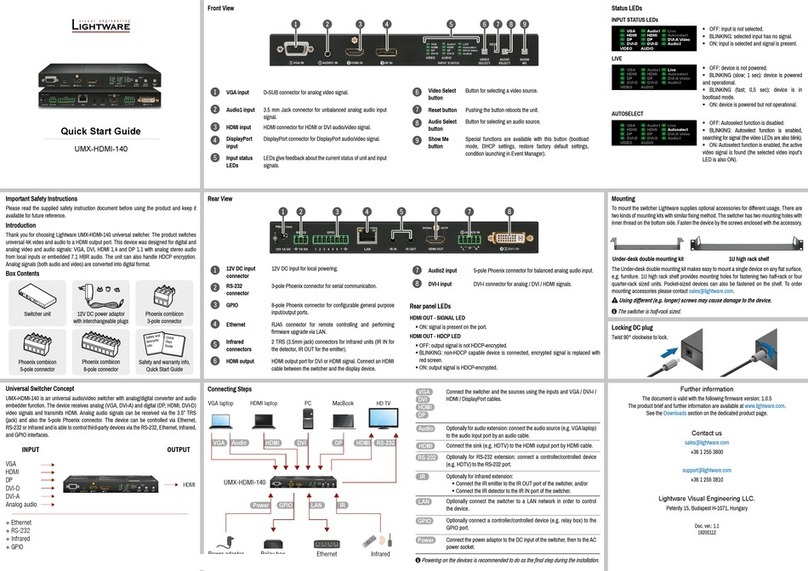Firstly connect the power adaptor to the DC input on the switcher, then to
the AC power socket.
Powering on the devices is recommended to do as the nal step during the installation.
Important safety instructions
Please read and keep the information in the attached safety instructions supplied with the
product before you start using the device.
Introduction
Thank You for choosing Lightware UMX-HDMI-140 universal switcher. The product switches
universal 4K video and audio to a HDMI output port. This device was designed for digital
and analog video and audio signals: VGA, YPrPb, DVI, HDMI 1.4 and DP 1.1 with analog
stereo audio from local inputs or embedded 7.1 HBR audio. The unit can also handle HDCP
encryption. Analog signals (both audio and video) are converted into digital format.
Box contents
Switcher unit 12V DC adaptor with
interchangeable plugs
Phoenix Combicon 3-pole
connector
Phoenix Combicon 5-pole
connector
Safety and warranty info,
Quick Start Guide
Phoenix Combicon 8-pole
connector
Rear view
Front view
1
VGA input D-SUB connector for analog video signal.
2
Audio1 input 3.5 mm Jack connector for asymmetric analog audio input signal.
3
HDMI input HDMI connector for HDMI or DVI audio/video signal.
4
DisplayPort
input
DisplayPort connector for DisplayPort audio/video signal.
5
Input status
LEDs
LEDs give feedback about the current status of unit and input
signals.
1
12V DC input
connector
12V DC input for local powering.
2
RS-232
connector
3-pole Phoenix connector for serial communication.
3
GPIO 8-pole Phoenix connector for congurable general purpose
input/output ports.
4
Ethernet RJ45 connector for remote controlling and rmware upgrade
via LAN.
5
Infrared
connectors
2 TRS (3.5mm jack) connectors for Infrared units (IR IN for
the detector, IR OUT for the emitter).
6
HDMI output HDMI output port for DVI or HDMI signal. Connect an HDMI
cable between the switcher and the display device.
Status LEDs
INPUT STATUS LEDs
OFF: input is not selected.
BLINKING: selected input has no signal.
ON: input is selected and signal is present.
LIVE
OFF: device is not powered.
BLINKING (slow; 1 sec): device is powered
and operational.
BLINKING (fast; 0,5 sec): device is in
bootload mode.
ON: device is powered but not operational.
AUTOSELECT
OFF: Autoselect function is disabled.
BLINKING: Autoselect function is enabled,
searching for signal (the video LEDs are also blink).
ON: Autoselect function is enabled, the active
video signal is found (the selected video input’s
LED is also ON).
Connecting steps
Locking DC plug
Twist 90° clockwise to lock.
Mounting
To mount the switcher Lightware supplies optional accessories for different usage. There are
two kinds of mounting kits with similar xing method. The switcher has two mounting holes with
inner thread on the bottom side. Fasten the device by the screws enclosed with the accessory.
The Under-desk double mounting kit makes easy to mount a single device on any at surface,
e.g. furniture. 1U high rack shelf provides mounting holes for fastening two half-rack or four
quarter-rack sized units. Pocket-sized devices can also be fastened on the shelf. To order
Using different (e.g. longer) screws may cause damage to the device.
The switcher is half-rack sized.
Under-desk double mounting kit 1U high rack shelf
7
Audio2 input 5-pole Phoenix connector for balanced analog audio input.
8
DVI-I input DVI-I connector for analog / DVI / HDMI signals.
6
Video Select
button
Button for switching among video sources.
7
Reset button Pushing the button reboots the unit.
8
Audio Select
button
Button for switching among audio sources.
9
Show Me
button
Special functions are available with this button (bootload
mode, DHCP settings, restore factory default settings,
condition launching in Event Manager).
Rear panel LEDs
HDMI OUT - SIGNAL LED
ON: signal is present on the port.
HDMI OUT - HDCP LED
OFF: output signal is not HDCP-encrypted.
BLINKING: non-HDCP capable device is connected, encrypted signal is replaced with
red screen.
ON: output signal is HDCP-encrypted.
Universal switcher concept
UMX-HDMI-140 is an universal audio/video switcher with analog/digital converter and audio
embedder function. The device receives analog (VGA, DVI-A) and digital (DP, HDMI, DVI-D)
video signals and transmits HDMI. Analog audio signals can be received via the 3.5” TRS
(jack) and also the 5-pole Phoenix connector. The device can be controlled via Ethernet,
RS-232 or Infrared and is able to control third-party devices via the RS-232, Ethernet, Infrared
and GPIO interfaces.
